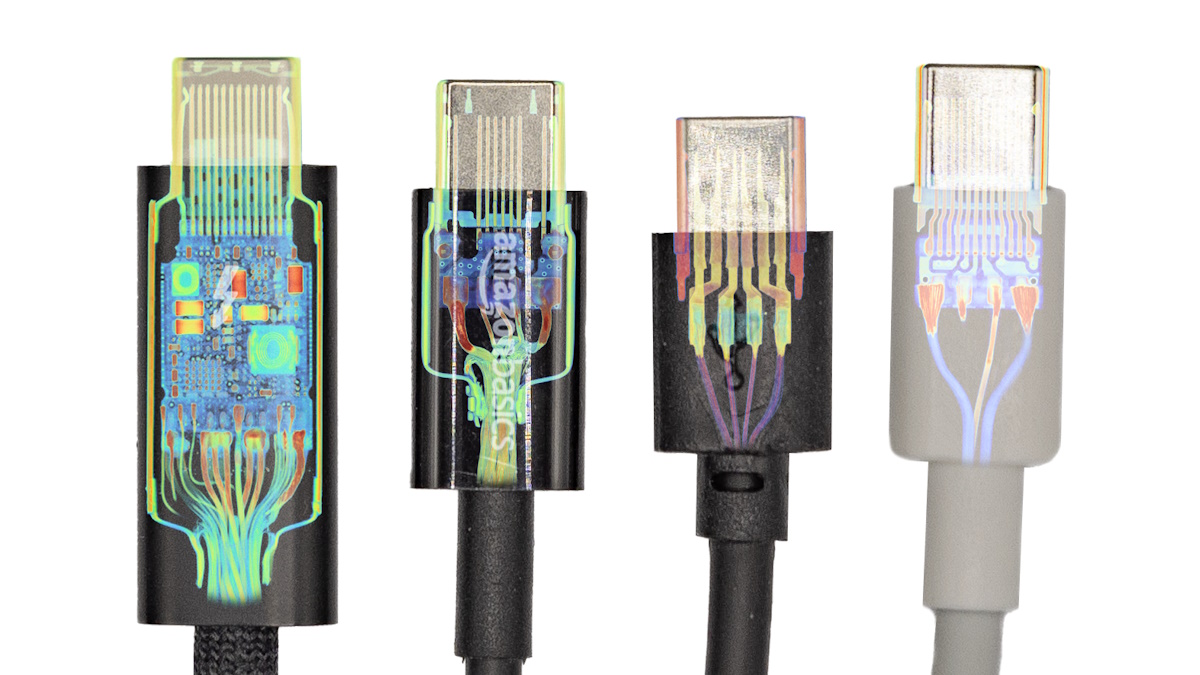TL;DR: Lumafield, a firm specializing in X-ray CT scans, decided to examine four different USB-C cables using their scanner. The resulting images displayed the disparities between a basic, inexpensive cable and the more intricate, costly cables with higher specifications. While USB-C has made life easier for individuals with multiple electronics, it has also introduced new complications. USB-C merely refers to the connector’s shape, and separate standards govern data speeds over USB and USB charging speeds. This means that devices have diverse USB-C requirements and necessitate a compatible cable. So, what sets cheap USB cables apart from expensive ones? Let’s find out!
Lumafield conducted their investigation by subjecting various USB-C cables to their X-ray CT scanner in order to determine why a $5 cable is so inexpensive and what wonders a $129 cable boasts. The results were captivating, with 3D scans that effectively conveyed the message.
First, Lumafield examined a $5.59 USB-C cable offered by NiceTQ. They discovered a cable with minimal components, consisting of pins and connector shells floating independently in over-molded plastic, without any shielding. Out of the eight pins, only four were connected, and they were soldered directly to the cable’s wires.
The product listing for this cable advertised data transfer speeds of up to 10Gbps (USB 3.2 Gen 2×1). However, this physical setup cannot achieve such speeds and is limited to a maximum of 480Mbps, just a fraction of its promised capability. Furthermore, there is no redundancy, so if any of the four active pins stops functioning, the cable will become useless.
On the other end of the spectrum is the Apple Thunderbolt 4 cable, priced at $129. However, Apple has valid reasons for charging this much. They guarantee data transfer speeds of up to 40Gbps for Thunderbolt 4 and USB 4, as well as up to 10Gbps for USB 3, along with charging speeds of up to 100W. Additionally, you can connect up to six Thunderbolt 3 devices in a daisy chain configuration.
These features are made possible by an incredibly intricate cable and connectors with complex PCB assemblies. The cable contains 20 separate wires, with ten shielded coaxially and all individually soldered to the PCBA. All of this is safeguarded by a strain-relief fitting crimped in from eight directions. The internal design is truly impressive. View price at Amazon: Apple Thunderbolt 4 Pro cable (1m; 100W).
Lumafield also examined two other cables, including an Amazon Basics cable, which demonstrated the complexity hidden within a seemingly simple USB-C connector. It also highlighted the challenge for average users to determine whether a cable they plan to purchase can perform the tasks it claims to be capable of. As a general piece of advice, we recommend buying charging cables only from reputable brands.
Comments:


